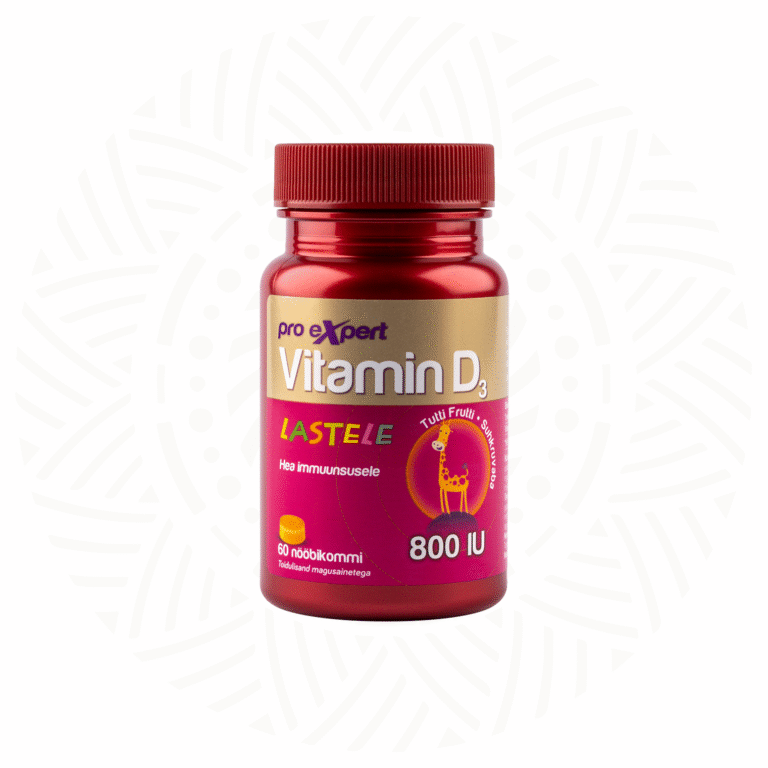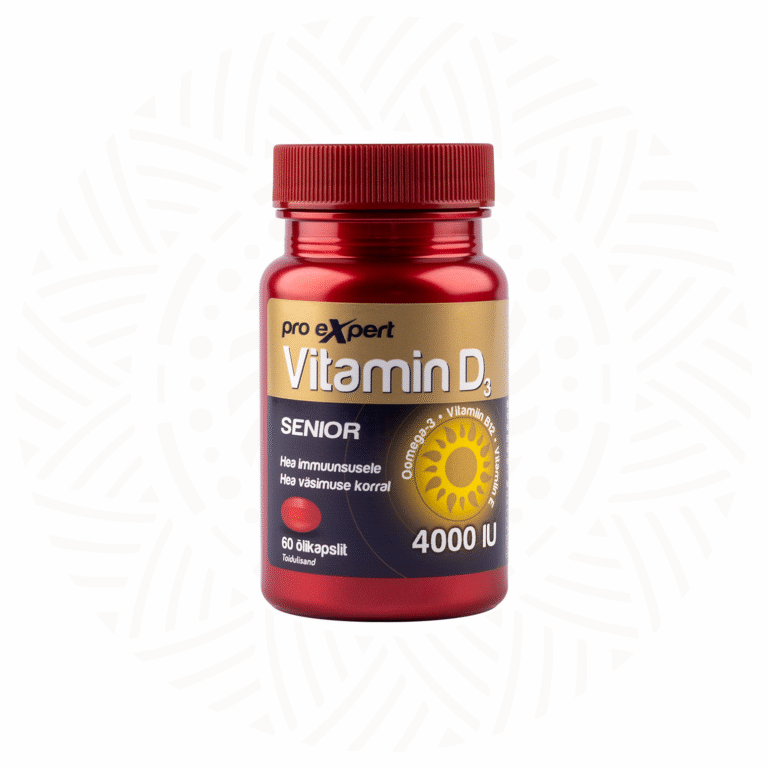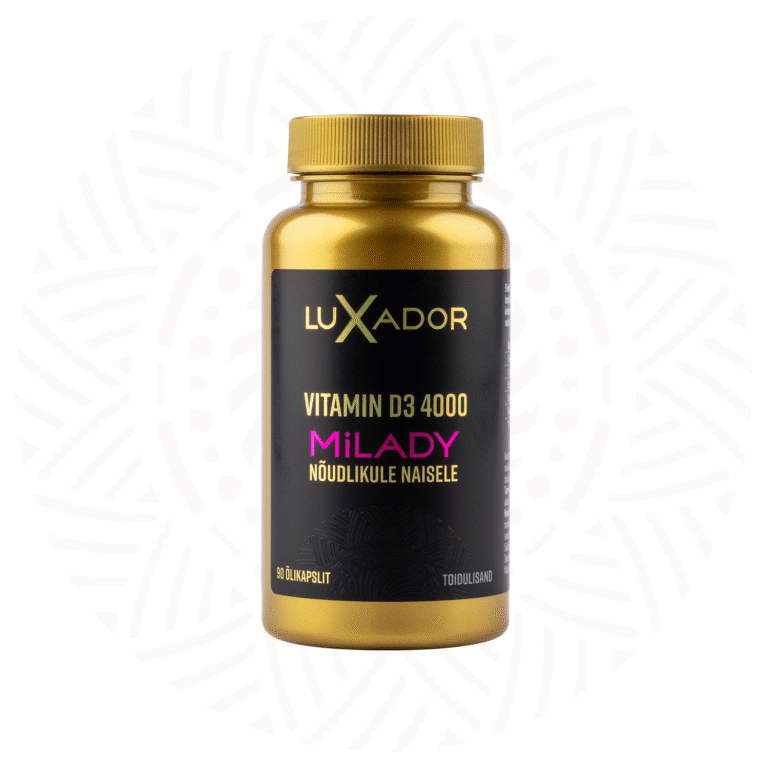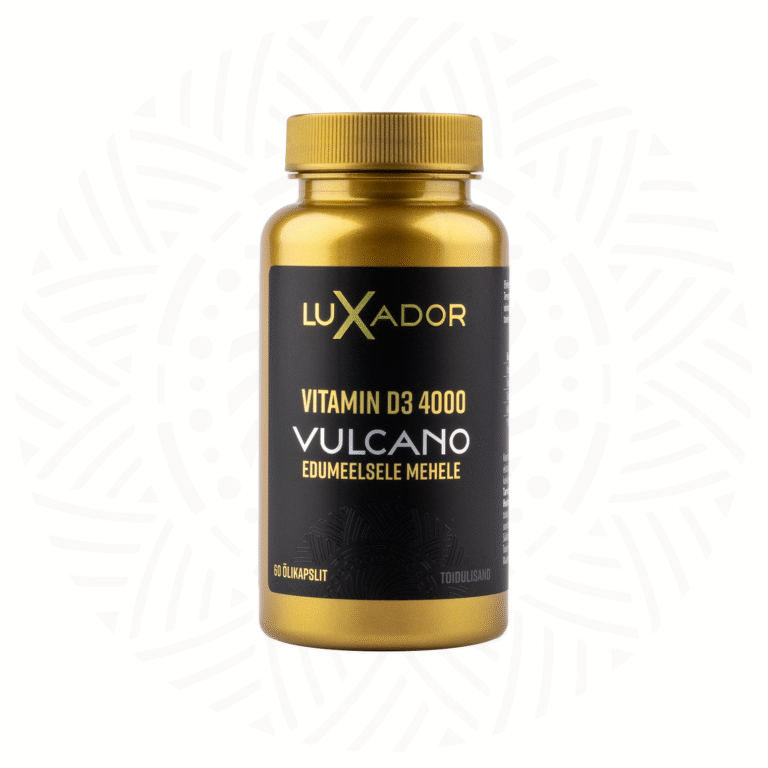Our lifestyles have changed significantly compared to those of our ancestors. Nowadays, most jobs and activities take place indoors during the midday hours of summer, reducing our exposure to sunlight. As a result, vitamin D deficiency can easily develop in people of all ages.
Below are the most important reasons why vitamin D deficiency is widespread in Estonia, even during the summer months:
What affects vitamin D synthesis?
Vitamin D is often called the sunshine vitamin because it is produced in the body through the skin under the influence of sunlight, specifically ultraviolet (UVB) radiation. The synthesis of vitamin D from UVB exposure depends on several factors, including:
- Latitude
- Season
- Time of day
- Use of sunscreen
- Age
- Skin pigmentation
Estonia’s geographical location
The equator, which divides the Earth into the Northern and Southern Hemispheres, is the region where the sun shines at a 90-degree angle year-round. Moving 40 degrees north or south, UVB radiation is still sufficient for year-round vitamin D synthesis. Countries such as Egypt, Morocco, and Southern Spain belong to this group and are popular winter destinations for Estonians.
The main reason for widespread vitamin D deficiency in Estonia is our geographical location. Estonia is situated in the Northern Hemisphere at 59 degrees latitude. We are at the same latitude as Southern Greenland and Southern Alaska and too far from the equator. As a result, from September to May—9 months of the year—the sun is not a reliable vitamin D source.
Estonia’s short summer
Vitamin D deficiency is widespread in Estonia, and one of the main reasons is our short summer.
Vitamin D synthesis occurs in the skin only when exposed to UVB rays from the sun. Unfortunately, UVB rays reach Estonia with sufficient intensity only one month before and one month after Midsummer Day, and only during midday between 10 AM and 2 PM. This means that in Estonia, you can realistically get vitamin D from the sun for only two months a year, and only if you are outside during peak sunlight hours. Therefore, the warm August sun is no longer a sufficient source of vitamin D.
Monitor your shadow length
No matter how warm or cloudless the weather is, vitamin D synthesis requires the sun to be at least 50 degrees above the horizon. One of the simplest ways to estimate the sun’s angle is to observe the length of your shadow.
- If your shadow is shorter than you, vitamin D synthesis is in full swing.
- If your shadow is the same length as you, vitamin D synthesis in the skin is no longer sufficient.
- If your shadow is longer than you, vitamin D synthesis in the skin no longer occurs.
Therefore, vitamin D synthesis does not depend on the temperature outside but only on the angle at which the sun hits the earth. Morning and evening walks in warm sunlight are not a sufficient source of vitamin D, as your shadow is longer during these times.
Use of Sunscreen
With beautiful summer weather, there’s an opportunity to enjoy the sun and replenish vitamin D stores. But how can this be done without endangering your health?
Dermatologists warn that any exposure to the sun, especially tanning, damages the skin and increases the risk of skin cancer. Unfortunately, the incidence of skin cancer has increased among Estonians in recent years.
Therefore, it is important to protect your skin from the sun, especially if you have fair and sensitive skin. It is worth noting that sunscreen with SPF 8 reduces vitamin D synthesis by 92.5%. Thus, sunscreens with SPF 30 or higher protect you from sunburn and skin cancer, but unfortunately, they also inhibit vitamin D production.
Fortunately, awareness of skin cancer prevention has significantly improved, and most people now use SPF 30 and SPF 50 sunscreens. Therefore, if you spend time outdoors at midday and use sunscreen to protect your skin while caring for your health, take vitamin D supplements year-round, including in summer.
Do warm climate vacations help increase vitamin D levels?
Warm climate vacations are a popular way to escape the winter cold, but they may not be as effective at raising vitamin D levels as one might think.
Sunscreen, which most people use, blocks a significant portion of UVB radiation, which is necessary for vitamin D synthesis. SPF 30 and SPF 50 sunscreens block 97% and 98% of UVB radiation, respectively.
Additionally, warm climate vacations are short-term, typically lasting 1-2 weeks. This is not enough time to store sufficient vitamin D, as vitamin D levels drop by about 50% in 30 days.
Age
Although in summer the primary reasons for vitamin D deficiency are related to an indoor lifestyle, older adults who spend time outdoors are still at risk. Why?
As we age, the skin’s ability to synthesize vitamin D decreases. By the age of 70, the skin’s ability to produce vitamin D under sunlight has already decreased by 75%. Therefore, it is recommended that retirees in Estonia take vitamin D supplements year-round, including during the summer months.
Darker Skin Tone
Melanin is a pigment that gives skin its color and acts as a natural sunscreen, protecting the skin from excessive sun exposure. Melanin is located in the upper layers of the skin and plays a crucial role in absorbing sunlight that could otherwise damage the skin and cause sunburn.
However, melanin also affects vitamin D production in the skin. People with darker skin have higher melanin levels compared to those with lighter skin, which reduces their skin’s efficiency in synthesizing vitamin D. This means that individuals with darker skin are at a greater risk of developing vitamin D deficiency.
How to maintain vitamin D levels year-round?
Living in Estonia and considering our geographical location, it is not reasonable to stop taking vitamin D supplements during the summer. The healthy vitamin D reference range in blood is 75 – 125 nmol/L year-round. It is important to maintain consistent vitamin D levels throughout the year, including in summer.
Critically low vitamin D levels are considered to be 25 nmol/L or lower, which is classified as a severe deficiency. At this level, the body shuts down several important functions, including bone metabolism and immune system activity.
So, if you want to enter autumn with good health, protect yourself from harmful sun exposure and take vitamin D supplements year-round, including in summer.
Enjoy the sun wisely and keep your vitamin D levels optimal throughout the year!








